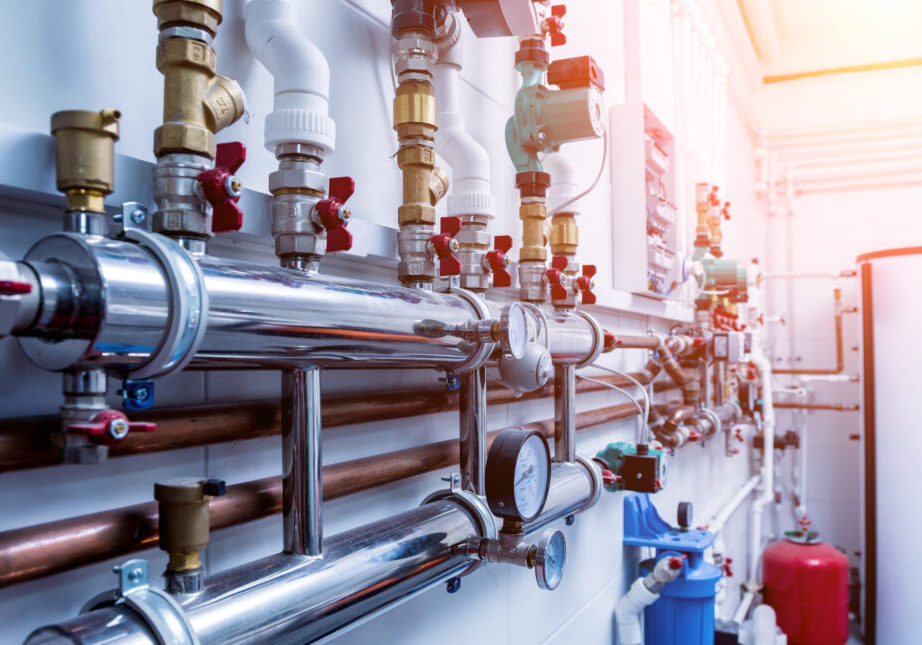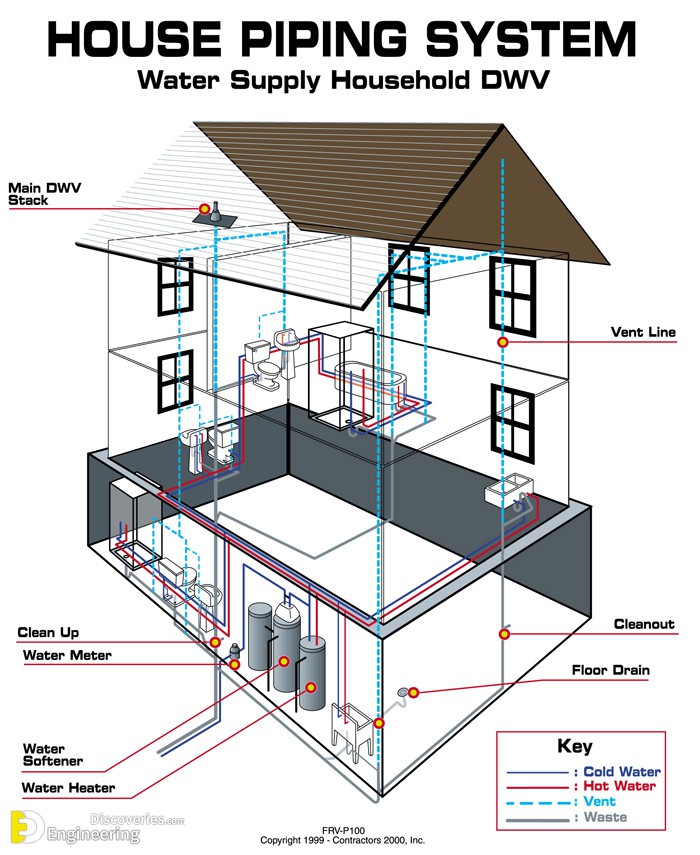A Closer Look at The Anatomy of Your Home's Plumbing System
A Closer Look at The Anatomy of Your Home's Plumbing System
Blog Article
How do you feel in regards to Understanding Your Home's Plumbing Anatomy?

Understanding just how your home's plumbing system functions is vital for every property owner. From supplying clean water for alcohol consumption, cooking, and showering to safely eliminating wastewater, a well-maintained plumbing system is crucial for your family members's health and wellness and convenience. In this detailed guide, we'll discover the complex network that comprises your home's pipes and offer pointers on maintenance, upgrades, and taking care of typical issues.
Intro
Your home's plumbing system is more than simply a network of pipes; it's an intricate system that ensures you have accessibility to clean water and reliable wastewater removal. Recognizing its components and how they collaborate can assist you prevent expensive fixings and ensure whatever runs efficiently.
Standard Components of a Pipes System
Pipelines and Tubing
At the heart of your plumbing system are the pipelines and tubing that bring water throughout your home. These can be constructed from various products such as copper, PVC, or PEX, each with its advantages in terms of sturdiness and cost-effectiveness.
Components: Sinks, Toilets, Showers, and so on.
Components like sinks, toilets, showers, and tubs are where water is made use of in your home. Understanding exactly how these fixtures link to the plumbing system assists in detecting issues and preparing upgrades.
Valves and Shut-off Factors
Shutoffs regulate the flow of water in your plumbing system. Shut-off valves are vital throughout emergency situations or when you need to make fixings, permitting you to separate parts of the system without disrupting water circulation to the entire home.
Water System System
Key Water Line
The primary water line attaches your home to the local water or an exclusive well. It's where water enters your home and is dispersed to numerous components.
Water Meter and Pressure Regulator
The water meter measures your water usage, while a pressure regulator guarantees that water streams at a secure stress throughout your home's pipes system, preventing damages to pipes and fixtures.
Cold Water vs. Hot Water Lines
Comprehending the distinction between cold water lines, which supply water directly from the main, and hot water lines, which carry heated water from the water heater, helps in troubleshooting and planning for upgrades.
Water drainage System
Drain Pipes Pipes and Traps
Drain pipelines lug wastewater far from sinks, showers, and commodes to the drain or sewage-disposal tank. Catches avoid drain gases from entering your home and also trap debris that can create obstructions.
Air flow Pipelines
Ventilation pipelines allow air into the drainage system, protecting against suction that can reduce drain and trigger traps to empty. Appropriate ventilation is crucial for maintaining the honesty of your pipes system.
Importance of Correct Drainage
Making sure appropriate drainage protects against backups and water damages. On a regular basis cleaning drains pipes and maintaining catches can avoid pricey repair work and expand the life of your plumbing system.
Water Heating System
Kinds Of Water Heaters
Hot water heater can be tankless or typical tank-style. Tankless heating systems heat water on demand, while storage tanks keep warmed water for prompt usage.
Updating Your Pipes System
Factors for Updating
Updating to water-efficient fixtures or replacing old pipes can improve water quality, decrease water bills, and raise the worth of your home.
Modern Plumbing Technologies and Their Benefits
Discover modern technologies like smart leak detectors, water-saving bathrooms, and energy-efficient hot water heater that can conserve cash and lower environmental influence.
Cost Considerations and ROI
Compute the in advance prices versus long-term savings when thinking about pipes upgrades. Several upgrades spend for themselves with reduced utility costs and fewer fixings.
Exactly How Water Heaters Attach to the Plumbing System
Recognizing how hot water heater connect to both the cold water supply and warm water distribution lines helps in identifying issues like not enough hot water or leaks.
Upkeep Tips for Water Heaters
Frequently flushing your water heater to remove sediment, examining the temperature level settings, and checking for leakages can prolong its life expectancy and enhance energy performance.
Typical Plumbing Concerns
Leakages and Their Reasons
Leaks can happen as a result of maturing pipes, loose installations, or high water pressure. Resolving leaks promptly avoids water damage and mold development.
Obstructions and Clogs
Blockages in drains and toilets are usually brought on by flushing non-flushable products or a buildup of grease and hair. Making use of drainpipe screens and bearing in mind what drops your drains can avoid clogs.
Indicators of Pipes Issues to Watch For
Low tide stress, sluggish drains, foul odors, or abnormally high water expenses are indications of potential pipes issues that ought to be addressed without delay.
Pipes Upkeep Tips
Regular Examinations and Checks
Arrange annual pipes evaluations to catch concerns early. Search for signs of leakages, rust, or mineral buildup in taps and showerheads.
DIY Upkeep Tasks
Simple tasks like cleansing tap aerators, checking for commode leaks making use of dye tablets, or protecting exposed pipes in cold environments can stop major plumbing concerns.
When to Call an Expert Plumbing
Know when a plumbing concern calls for expert knowledge. Trying complicated repair work without correct understanding can bring about even more damage and greater repair service costs.
Tips for Lowering Water Usage
Straightforward habits like repairing leaks immediately, taking shorter showers, and running full loads of washing and dishes can save water and reduced your utility expenses.
Eco-Friendly Plumbing Options
Think about lasting pipes products like bamboo for flooring, which is durable and eco-friendly, or recycled glass for countertops.
Emergency Readiness
Actions to Take Throughout a Pipes Emergency situation
Know where your shut-off shutoffs lie and just how to shut off the water supply in case of a burst pipe or major leak.
Importance of Having Emergency Situation Get In Touches With Useful
Keep get in touch with information for local plumbing professionals or emergency situation solutions easily offered for quick reaction during a plumbing dilemma.
Environmental Influence and Preservation
Water-Saving Fixtures and Devices
Setting up low-flow taps, showerheads, and toilets can dramatically decrease water usage without compromising performance.
DIY Emergency Situation Fixes (When Appropriate).
Momentary fixes like making use of duct tape to spot a leaking pipe or positioning a pail under a leaking tap can reduce damage up until an expert plumber arrives.
Final thought.
Recognizing the makeup of your home's pipes system encourages you to maintain it efficiently, saving time and money on repair work. By adhering to normal maintenance regimens and remaining notified regarding modern plumbing technologies, you can guarantee your pipes system runs effectively for many years to find.
Exploring Your Homes Plumbing Anatomy
Water Supply System
Main Water Line: This is where water enters your home from the municipal supply or a private well. Water Meter: Typically located near where the main water line enters the property, it measures the amount of water used. Shutoff Valve: It s crucial to know where this is in case of emergencies. It allows you to turn off the water supply to the entire house. Pipes and Fittings: These distribute water throughout your home. Materials can include copper, PVC, or PEX. Drain-Waste-Vent (DWV) System
Drains: Located in sinks, showers, and tubs, these carry wastewater away. Traps: U-shaped pipes under sinks that hold standing water, blocking sewer gases from entering the home. Vents: Pipes that lead from the DWV system to the outside, preventing vacuum formation and allowing gases to escape. Sewer Line: Carries all wastewater from the home to the municipal sewer system or a septic tank. Fixtures and Appliances
Sinks, Toilets, and Showers Dishwashers and Washing Machines Water Heaters Maintenance Tips
Regularly check for leaks in exposed pipes and around fixtures. Inspect the water heater annually for signs of wear. Clean drains and traps to prevent clogs and odors. Know how to shut off water to individual fixtures. When to Call a Professional
Major leaks or burst pipes Installation of new pipes or fixtures Septic tank issues Remodeling projects that involve plumbing changes Conclusion
Understanding the anatomy of your home's plumbing is key to maintaining a functional and efficient system. Regular checks and knowing when to call in the experts can save you time, money, and stress.
https://www.mavyn.com/blog/exploring-your-homes-plumbing-anatomy

Do you like reading about Plumbing Installation 101: All You Need to Know? Place a remark further down. We will be delighted to see your thoughts about this entry. We are looking forward to see you back again later on. Sharing is good. Helping people is fun. Thanks so much for going through it.
Visit Our Site Report this page